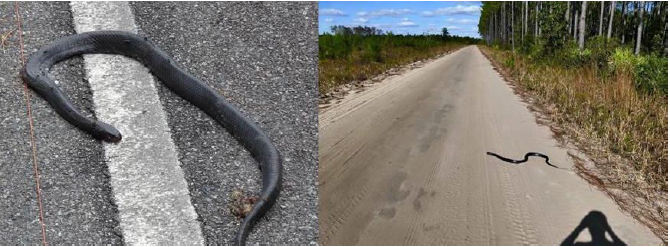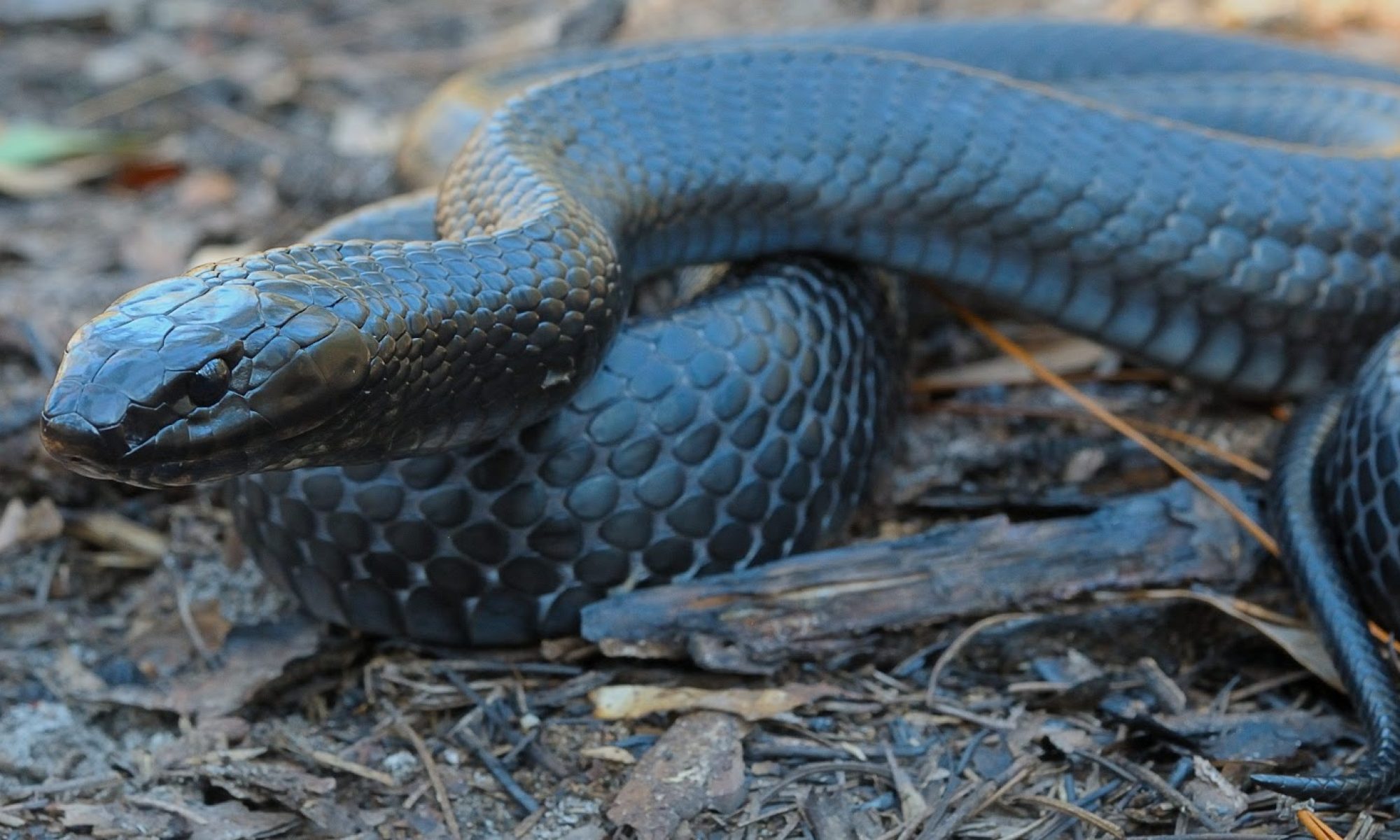Human population growth will increase the potential of eastern indigo snake mortality from both intentional and unintentional killing. This will likely occur from direct mortality by people and their domestic animals, from the use of chemicals to control disease and pests, and from road mortality. Deliberate killing of snakes is common (Andrews et al. 2008). Life history traits such as the snake’s diurnal nature, large body size and their large home range size (that often results in the necessity of crossing roads), make them more susceptible to being observed and deliberately killed.
An increase in the number of mortalities from vehicles on roads may result in declines or extirpation of populations. At a study site in Florida, researchers compared the catch-per-unit-effort in 1981-1983, and 2005-2009, and found that the eastern indigo snake population had declined by greater than 95 percent (Godley and Moler 2013). The potential eastern indigo snake habitat did not appear to substantially decline or change in quality over the three decades of the study. The researchers suggested evidence supported cumulative, unsustainable mortality from vehicular traffic as a primary factor in the population decline (Godley and Moler 2013).
Because of the cryptic nature of eastern indigo snakes and the difficultly surveying for them, many of our records are from sightings on roads, either Dead on Road (DOR) or Alive on Road (AOR) (Figure 18). A preliminary summary of DOR/AOR data by Enge, Stevenson, Chandler and Elliott (unpublished data), in Georgia and Florida indicate over 200 snakes were observed on roads since the year 2000 with most of these sightings as DORs (unpublished data). These 200 snakes are likely only a very small fraction of the actual DOR/AORs since many go unreported and DORs are often scavenged by other animals.
Eastern indigo snakes will cross roads, but telemetry data indicate they prefer areas away from roads (Breininger et al. 2012, Hyslop et al. 2014, p. 105, Bauder et al. 2018). Breininger et al. (2012) found that eastern indigo snakes had relatively high survival in conservation core areas, but along roads and in suburbs their survival was greatly reduced. They found study animals dead along roads, including individuals intentionally killed by humans (Hyslop et al. 2009c, Breininger et al. 2012). Hyslop et al. (2014, p. 105) did not record any radio-tracked study snakes outside boundaries created by paved roads, but found 2 eastern indigo snakes not included in the telemetry study dead on these roads. The radio-tracked snakes were found to regularly cross unpaved roads. Bauder et al. (2018, p. 751), suggest eastern indigo snakes avoid larger paved roads (primary and secondary roads such as interstates and highways), but readily cross smaller paved roads (tertiary roads such as two-lane rural county roads). In populations with low numbers of individuals, any additional negative influencing factors to populations could cause local extirpations. This is especially true in long-lived snakes, such as the eastern indigo snake, that make long-distance movements, and have low reproductive rates, and low natural densities. Models have demonstrated that protection of adult eastern indigo snakes, which are the age class most likely to be killed on roads, is the most important factor in survival of a population (Hyslop et al. 2012).

